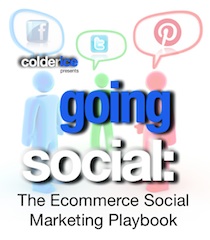How to Create a Social Media Strategy
Like, follow, and subscribe are three words that have become commonplace in our world. Social media has become a nexus of promotion and advertising, especially for small businesses. If your business has yet to enter the social media space, this is your sign. Creating a social media presence doesn’t have to be complicated, but it does need to reflect your brand. You’ll be the best you can be with our four tips to creating a social media strategy.
Be accessible
Social media platforms are a direct connection to your customers. Customers can tag photos, comment on posts, and participate in polls. In today’s world, it’s vital for businesses to have a social media presence. Take the time to open and cultivate social media platforms like Facebook, Instagram, Twitter, TikTok, and Pinterest. Give customers multiple platforms to reach your business.
Be receptive
Being accessible also means being receptive. If customers are reaching out with feedback, it’s likely other customers are experiencing the same issues. Also, ask customers for their feedback. Use polls to influence new products or policies. Your followers are the ones buying products and want their voices heard. Let your customers lead the way (within reason).
Be practical
With the rise of platforms like TikTok, social media trends cycle through at an insane rate. Additionally, our research shows that 31% of customers shopped on TikTok throughout last year. This doesn’t mean your business should hop on every trend, though.
For example, if your business sells athletic shoes, TikTok dances would be a great way to showcase your product. However, participating in a TikTok trend that only shows someone from the waist up wouldn’t be ideal. View your social media from a customer perspective, and think about what content would make you buy a product from your business.
Be creative
This might seem contradictory to the previous paragraph, but hear us out. Being creative means trying trends and posting unique content that makes sense for your business. Brainstorm creative ways to showcase your products that still highlights their use and purpose. Don’t limit your creativity; just be thoughtful when choosing your strategy. Don’t be afraid to think outside of the box, but keep it on brand.
On the flip side, staying on brand might mean keeping it simple! If your brand prides itself on philanthropy, show customers how you’re helping the community. If your business started in a basement, show customers how much you’ve grown. Our study showed that 81% of customers want to support small businesses, with 45.5% of customers wanting to shop with small businesses in their area. Being creative doesn’t necessarily mean choosing the boldest approach. Sometimes, it simply means trying an approach you haven’t before.
Tips for your social media strategy
- Be accessible to customers by staying connected and active on social media platforms.
- Be receptive to customers by asking for feedback and taking their feedback seriously.
- Be practical in your social media strategy, and don’t take part in trends simply for views.
- Be creative without losing your brand’s message or identity within all of your content.
reat way to build your brand and develop a relationship with your customers. Still, while many ecommerce businesses have already established a social media presence, devising a plan for your posts leverages the power of social media even more.
Here’s some information about creating and implementing an effective social media plan for your ecommerce business.
Be choosy. While it’s tempting to jump on every social media platform, be realistic about how much you or your team can keep up with. Consider too how well your business translates to the different platforms. Sometimes, a service-oriented business can skip photo-dependent sites like Instagram. If your audience skews older, that demographic is more likely to check Facebook than Snapchat.
Be easy to find. When you create social media accounts, choose usernames that match your business name as closely as possible, and try to keep them consistent across all of your social media platforms. Include as much information about your business in your profile as possible, as this indexable content can help search engines direct interested parties to not only your social media accounts but your business website as well. Once you’ve established the accounts, be sure to add your handles to your email communication, signage, stationery and other methods you use to make your business visible.
Be organized. Develop an editorial calendar to help you build out timely and newsworthy content. Creating compelling social content can be challenging, and utilizing a calendar can help a company focus on current topics and trends.
Build your following. Put thought into your content, and followers will pay attention when what you post is original and shareable. Don’t shy away from engaging well-known bloggers, influencers and media outlets. One great way to do this is to respond with useful information when users ask a question on one of your social media channels. Offering discounts to customers is another method to consider in order to grow your following.
Be responsive. Social media is worthless unless you’re ready to have conversations with your followers. Post regularly, be prompt when answering questions and concerns, and follow any interested parties yourself. Keep your content fresh and consistent so followers have a reason to check in frequently.
Be yourself. Social media gives you an opportunity to infuse your personality into your business. Consider sharing the story behind your business, interesting links you’ve found and inspiring words with your followers. You might also want to consider sharing any challenges you faced when starting your business—chances are, other businesses will encounter the same challenges and can benefit from your experience and insight.
Be innovative. Social media gives small-business owners unique opportunities to try out new products, programs and communications. Offer your followers the first look at a new item in your shop, a discount on the first shipment or the chance to sound in about their opinions. Once your promotion or experiment is over, track the kind of response you got and add the results to your social media plan.



